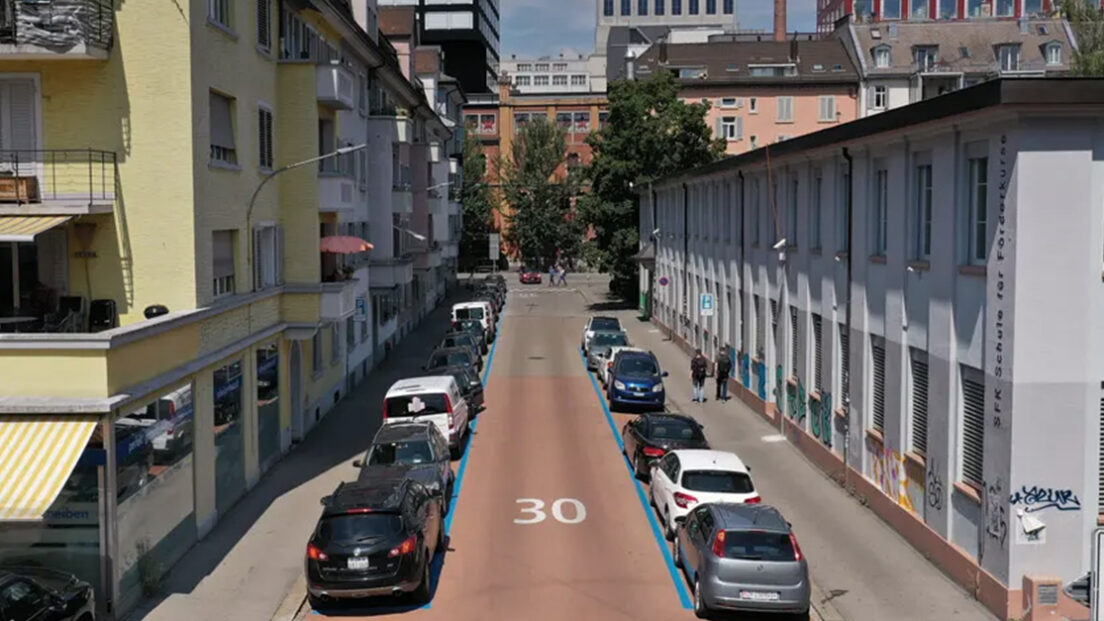Zurich is testing colored road surfaces for their cooling effect

Since the summer of 2020, the civil engineering office of the city of Zurich has been carrying out a pilot project with different colored road surfaces. The effect on the ambient temperature was tested. First conclusion: Even light-colored coverings bring little cooling.
Since the summer of 2020, the civil engineering office in Zurich has been running a pilot project to reduce heat. According to a press release from the city of Zurich , differently colored road surfaces were applied to Roggenstrasse in Zurich-West in order to measure the effect on the temperature. The results show that the light-colored coverings – in contrast to shadows from trees and houses – only have a minor influence on the temperature.
For these measurements, new surfaces were installed on Roggenstrasse and the road was divided into three areas: a reference area made of conventional, street-gray asphalt and two areas with a beige and a reddish surface, according to the city’s statement. Cameras and embedded probes recorded the surface temperature and heat storage of the pads.
The results now available show a minor effect of the light-colored deposits on the surface temperature. The reference surface in conventional gray was even about 2 degrees cooler on average than the two bright surfaces. This result can be explained by the shadow that trees and a high building temporarily cast on the reference area, it is said. It therefore heated up less.
The differences between the two light surfaces were small. The beige covering stayed a little cooler than the reddish one. Calculations showed that if all surfaces had been exposed to the same amount of sunlight, the light surfaces would have been 2 degrees cooler than the reference area.
The results of the pilot project clearly show how important shade and trees are for reducing heat in cities, according to the civil engineering office.